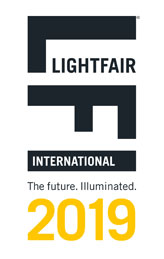India will be lighting efficiency plans extended to the other eight countries
As the world's third largest emitter of greenhouse gases, India hopes to extend its lighting efficiency program to seven other Asian countries and the UK, with the help of the World Bank, while applying the program to other technical areas domestically.
EESL, a state-owned enterprise in charge of purchasing and distributing energy-saving appliances, said it had signed preliminary agreements with Bangladesh and Sri Lanka and was in discussions with Nepal, Cambodia, Vietnam, Myanmar and Thailand.
"We are in talks with UK utilities and municipalities to get orders because we need economies of scale to lower the price of LEDs, as we do in India," EESL general manager Saurabh Kumar said in an interview in New Delhi. "We hope to be able to implement projects outside India in the next six months," he added, "our business model and procedures will remain the same, and we will send officials to work in Colombo, Dhaka and Bangkok in February."
"Banks are interested in supporting EESL's dialogue with other countries, given the success of India's energy efficiency program," said Simon Stolp, World Bank's chief energy expert in South Asia, in an e-mail message, adding that the bank recently received a US $ 300 million to support the expansion of EESL in India. Stolp also said that in which countries banks will cooperate with EESL has not yet been determined.
According to the London global nonprofit group The Climate Group, lighting produces nearly 6% of the world's carbon dioxide emissions. Should the global use of LED technology, can reduce more than 1.4 billion tons of carbon dioxide emissions, and less built 1250 power plants.
According to TrendForce's Green Energy Division LEDinside latest "2017 Global Lighting Market Outlook" report pointed out that this (2016) global LED lighting market will reach 29.6 billion US dollars in 2017 is expected to reach 33.1 billion US dollars, the market penetration will exceed 52 / RTI & gt;
"EESL is aiming to introduce air conditioners with an EER of 5.2, which will cost less than Rs 40,000 ($ 590) and support monthly installments," Kumar said.
To reduce costs, EESL is negotiating with a handful of Indian banks on a large order to replace air conditioners and lamps at ATMs across the country with energy-efficient products.
According to a study by the Ernest Orlando Lawrence Berkeley National Laboratory in California, demand for air-conditioning power in India will increase from 8 MWh in 2010 to 2030, Terrawatt-hours) to 239 megawatt-hours (terrawatt-hours) per year.
The report estimates that by 2020, about 30% of urban households in India may have indoor air conditioning, by 2030, this proportion will grow to about 73%. In addition, the report shows that a more extensive use of energy-saving air conditioning, by 2030 can reduce the peak demand of 60 gigawatts (gigawatts), or less build 120 500 megawatts (megawatts) coal-fired power plants.
